ATLAS is one of the two general-purpose
experiments currently collecting and analysing
data at the large hadron
collider (LHC) at CERN.
The Birmingham ATLAS group currently has twenty-nine members, including six Ph.D. students.
We are strongly involved in construction and testing of the new upgraded tracker for ATLAS (ITk), following earlier work constructing and testing components of the currently-operating SCT silicon tracker.
The ITk construction makes extensive use of the particle physics group's BILPA silicon instrumentation laboratories.
We hold, now and for many years, leading roles in the first level of triggering for ATLAS, mainly related to calorimeter triggers (L1Calo) for electrons and photons.
We are strongly engaged in firmware work and software for the first-level trigger upgrades, and in supporting the operations of the L1Calo trigger system.
The team's analysis programme has three main strands: Higgs boson physics, the physics of the top quark, and the physics of multiple electroweak-boson interactions.
In addition, we have past and some current engagement in measurements using the heavy b and c quarks.
Our staff and PhD students are distributed across these activities, with PhD students typically working on a specific analysis as well as one of the instrumentation areas.
Detector Development for the ATLAS Experiment
The First-Level Calorimeter Trigger (L1Calo)
The L1Calo system is a vital part of online event selection at ATLAS.
It provides the first level trigger decision for all calorimeter-based
objects: electrons, taus, jets and missing energy. The system
consists of several crates of custom designed electronics which
are located in the underground electronics hall next to the
experimental cavern. It is required to perform event selection
at a rate of 40 MHz within a maximum time of 1 micro-second.
There have been two main iterations of the L1Calo system to date.
A further upgrade is underway to be ready for HL-LHC operation in the 2030's.
Birmingham has a wide involvement in the current L1Calo trigger, spanning from the "eFEX" electron/photon trigger,
developed with RAL, QMUL and Cambridge, across software and system aspects.
For the initial trigger, used until the early 2020's, Birmingham had been particularly involved with the design,
testing and operation of the Cluster Processor Module ("CPM"), which identified electron/photon and
tau candidates, sending their number and location to make the
final Level-1 trigger decision and guiding the next level of
trigger processing.
For the HL-LHC upgrades, coming in the 2030's, we continue to be involved in the continued operation of the eFEXes.
Our main activity in this area is, however, on the new "Global" hardware trigger processor which is being constructed.
The Global system relies on many identical multiplexed boards, with modern complex FPGA processing.
Programming these FPGAs is a major task, which we are strongly engaged in here in Birmingham at the level
of the overall firmware structure and framework.
Furthermore, we continue to maintain and improve the working system by refining calibration
and monitoring techniques, as well as developing new algorithms for HL-LHC.
The Semiconductor Tracker (SCT) and the Tracker Upgrade (ITk)
The ATLAS Inner detector (ID) measures with precision and high efficiency the large number of tracks produced at the interaction point. The tracking involves three types of tracker, located in a 2T solenoidal magnetic field: pixel detectors within 15cm of the beam pipe; the SemiConductor Tracker (SCT) which comprises silicon strip detectors, which are planes of strips at radii between 25cm and 60cm.
The outermost tracker is the Transition Radiation Tracker which extends out to 1m radius.
The Birmingham group’s involvement is with the SCT whose efficient performance is crucial to ATLAS; it provides four precise space points which are essential in the determination of track momentum. The group built and tested much of the hybrid readout electronics for the Barrel SCT. Currently, our SCT team assists in operating the detector during the LHC runs, in monitoring the data quality and in understanding and solving interesting anomalies.
Beyond the current running at CERN, we are participating in
building the new ATLAS Inner Tracker (ITk) for the upgraded LHC (High Luminosity: 'HL-LHC'),
will be installed in ATLAS to be ready in 2027. The new system will
replace the existing SCT as well as the TRT, which will not be able to cope
with the particle multiplicity and radiation rates expected at the HL-LHC.
The Birmingham group participates in the production of the 'Barrel Long-Strip'
and 'Barrel Short-Strip' modules, based on 10x10cm silicon sensors.
The modules include either one or two hybrids, equipped with
10 front-end chips each, which are being assembled and tested in our electronics
cleanroom, for our own module production as well as providing hybrids to other UK groups.
This project demands a special focus on quality control.
The large-scale production and test effort has started and will continue in the coming years (2023-2025)
This effort is part of the new
Birmingham Instrumentation Laboratory for Particle physics and Applications (BILPA)
clean-room facility, which opened in 2016.
A further group effort is the
use of the Medical Physics MC40 cyclotron at our university to irradiate material and
devices to fluences equivalent to those expected after running throughout
the period of the upgraded LHC. The Birmingham group is involved in the 'Quality Assurance'
process of ITk sensors which includes irradiation and testing.
Current Analysis of ATLAS Data
Exploring the structure of the Higgs sector
On 4th July 2012, with strong involvement and leadership of the Birmingham group, the
ATLAS (arXiv: 1207.7214) and
CMS (arXiv: 1207.7235) Collaborations
announced the observation of a particle consistent with the
Standard Model Higgs boson in the mass region around 125–126
GeV. Further details can be found in the official
official CERN Press Release,
University press release and also at
BBC News, July 2012. Following the discovery, our focus shifted to elucidating the structure of the Higgs sector through measurement of the properties of the observed boson, as well as searches for physics beyond the Standard
Model through an extended Higgs sector.
More details can be found in the dedicated page.
Studies of Properties of the top quark
The top quark is the last quark flavour to have been discovered.
It has an extraordinarily
high mass, nearly 175 times as heavy as a proton, making it
the heaviest fundamental particle discovered to date.
The Large Hadron Collider, for the first time in particle physics,
is providing a very large number of top quarks, so it can also be called
a 'Top-Factory'. In the 2011 run period, about 100000 top-quark-pairs
have been recorded.
This opens up new opportunities to study the properties of the top quark. Its
decay modes result in complicated final states to analyse, which require all
detector components to be very well-understood and reconstruction techniques to be
optimised.
The Birmingham group is actively involved in studying
those properties, namely the spin correlation of top-quark pairs,
lepton identification in top-quark production,
and the width of the top-quark mass resonance.
The group also contributes to the development and maintenance of the
analysis software packages.
Software and Computing Infrastructure
Distributed Computing: The Grid
Even before being built, it was known that ATLAS (and the other LHC
experiments) would produce more data than any other experiment in history
and so a new computer system was required to allow the physicists to analyse
it all. This new system is called the LHC Computing Grid and consists of a
network of computer clusters supplied by participating institutes all around
the world. All the data is distributed across these computing 'sites' and
can be analysed at the sites using the available computing power. In order
to hide the complexity of the underlying system, a large amount of software
has been developed so now a physicist just needs to specify what data they
want to analyse and how they want to analyse it and the system takes care of
everything else. Using the networking and technology that is already in
place for the internet, this analysis task gets sent to whichever computing
site is deemed the best at that time where it is run and the results sent
back. It is analogous to the electrical grid - as a user you don't care
where the electricity is generated, you just want it to flick a switch and
be able to use it! With thousands of computers available, a physicist can
now analyse far more data in a far shorter time than has been possible
before. Here in Birmingham we provide nearly 400 'slots' for analysis tasks
to be run as well as 200 Terabytes of storage. Over the whole grid,
several hundred thousand jobs are run everyday and over 15 Petabytes
(15,000,000,000 Megabytes!) of data is stored every year.
|
|
|
|
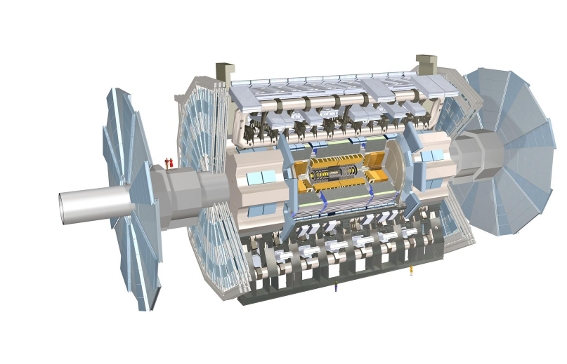
The ATLAS detector - schematic view
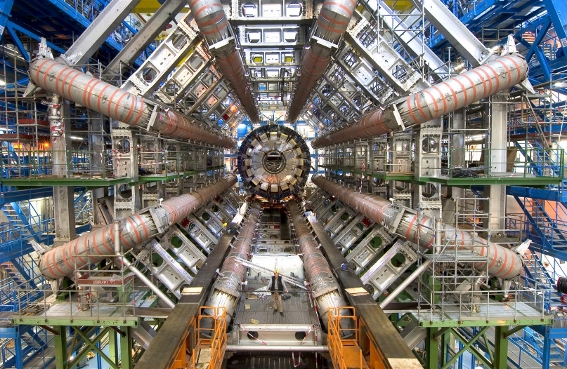
ATLAS detector - during construction - Nov. 2005
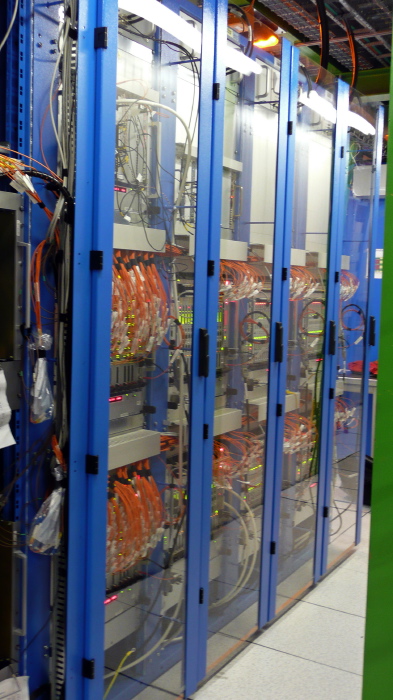
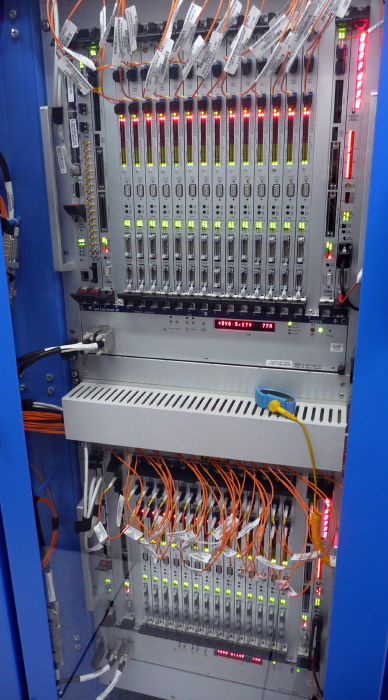
Part of the L1Calo system at the ATLAS electronics hall
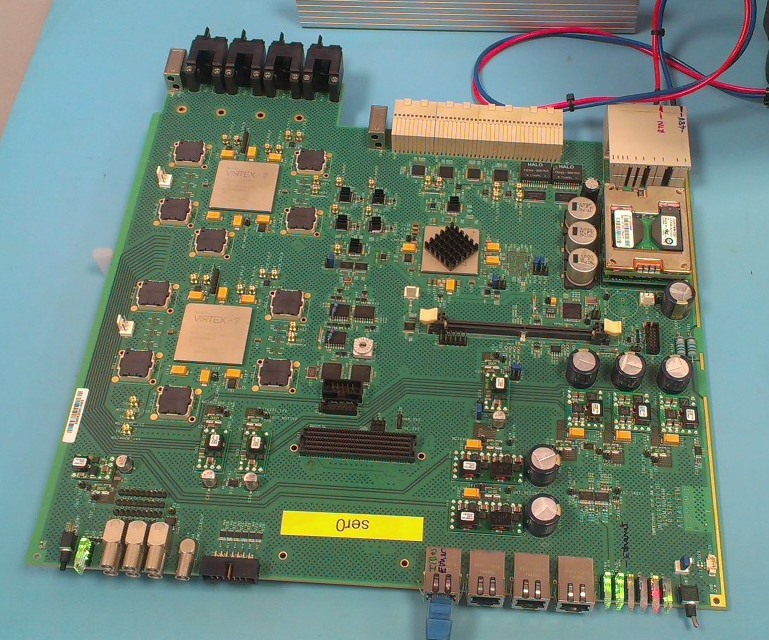
ATLAS First-Level Calorimeter Trigger Upgrade: FEX Test Module designed and tested in Birmingham (2016)
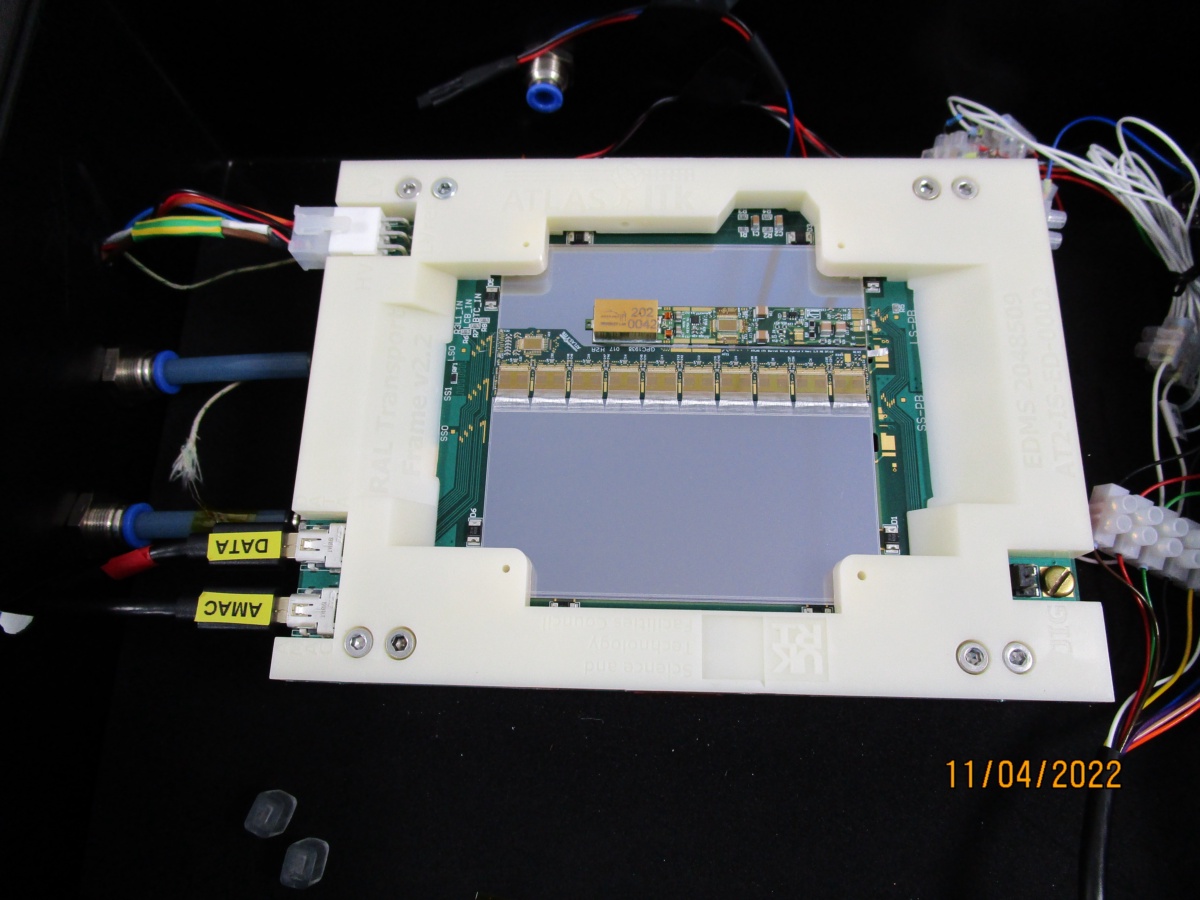
Full electrical module with one hybrid and 10 frontend chips for the ATLAS Tracker Upgrade (ITk), assembled at
BILPA in 2021
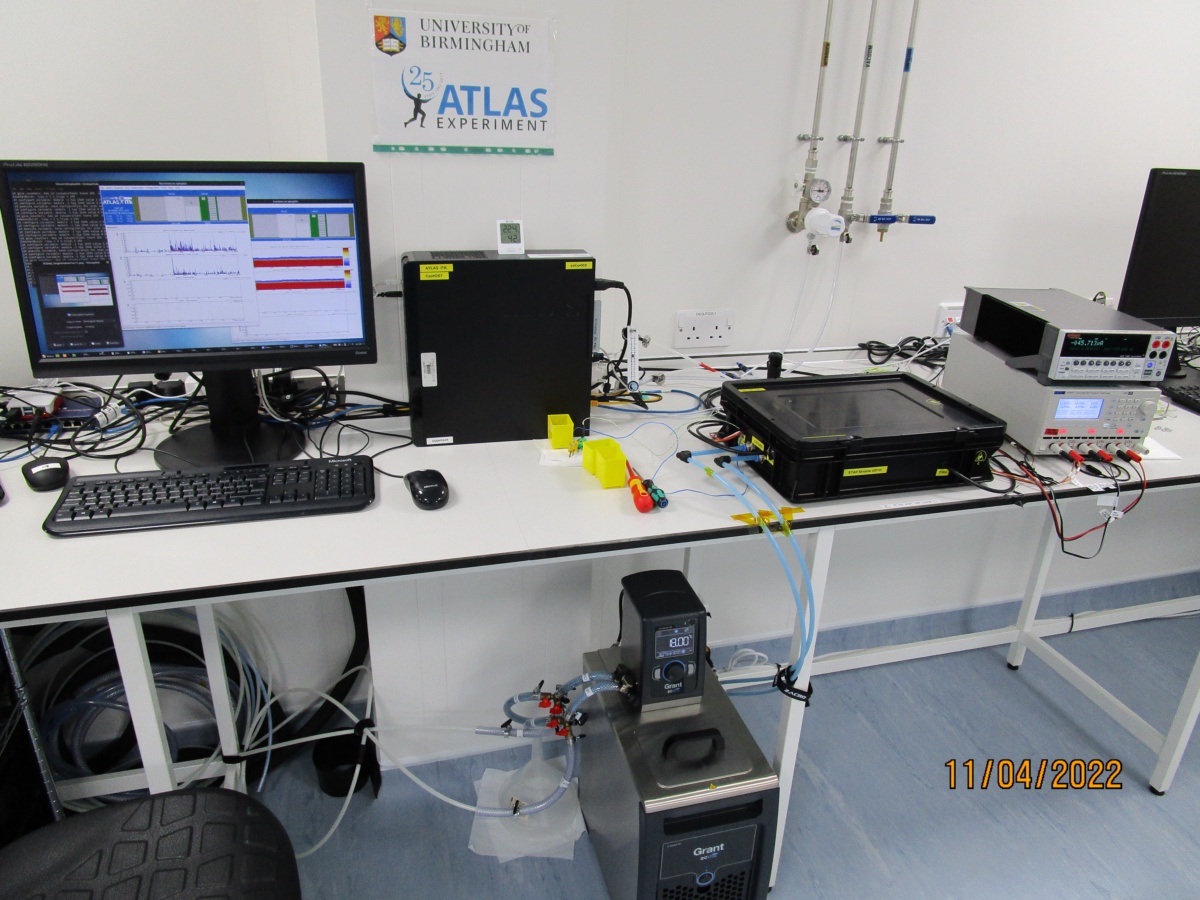
ATLAS Tracker Upgrade (ITk) module test setup at
BILPA
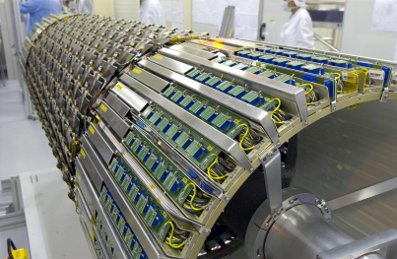
Current ATLAS Silicon Tracker (SCT) arriving at CERN in 2005
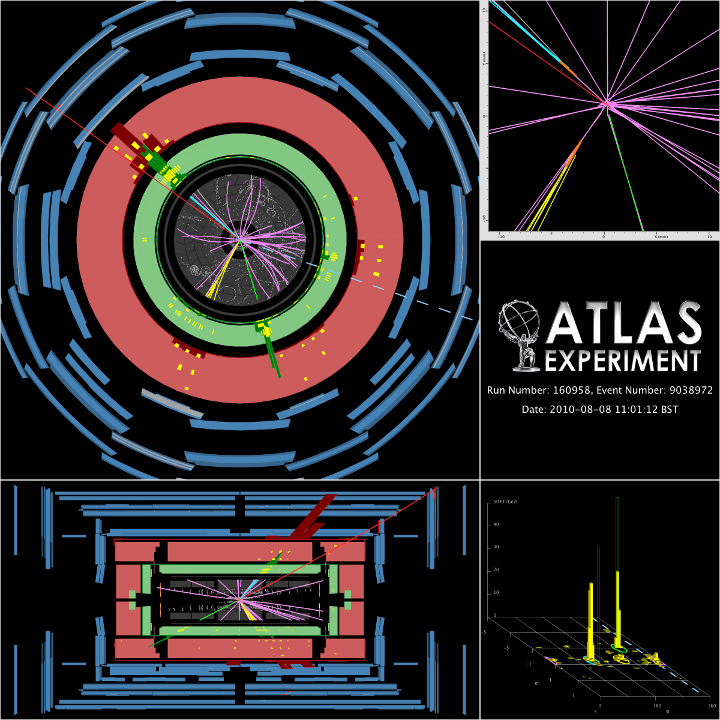
Top-quark decay into one electron and one muon in ATLAS from 2010 data, shown in Atlantis event display
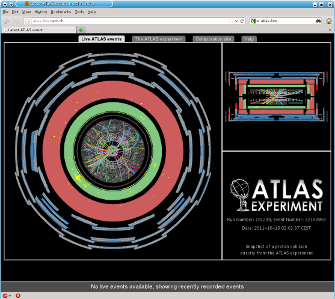
Atlas-Live website with live events, image from 2011 LHC run period. Click on image for latest event

Illustration of the Worldwide Computing Grid: European sites
|









